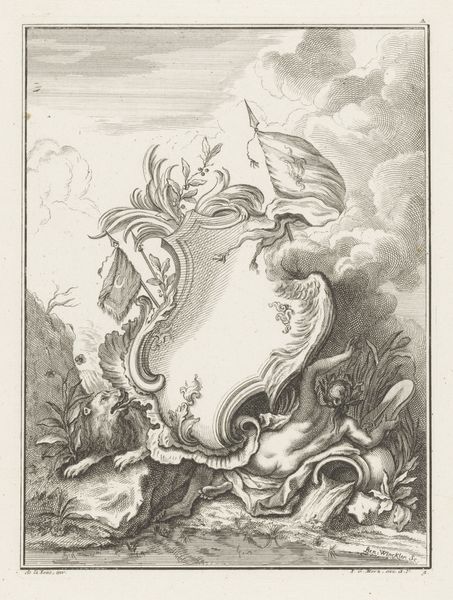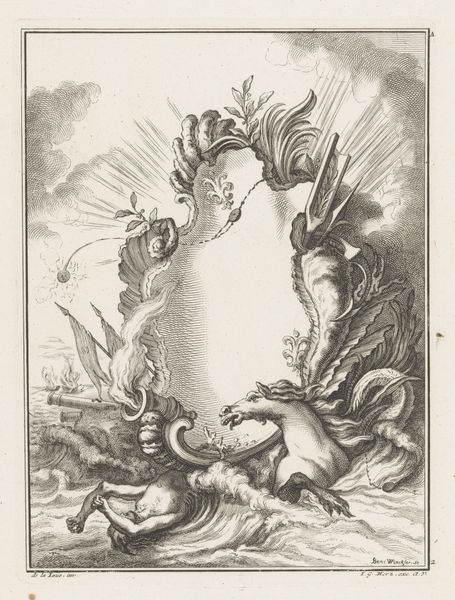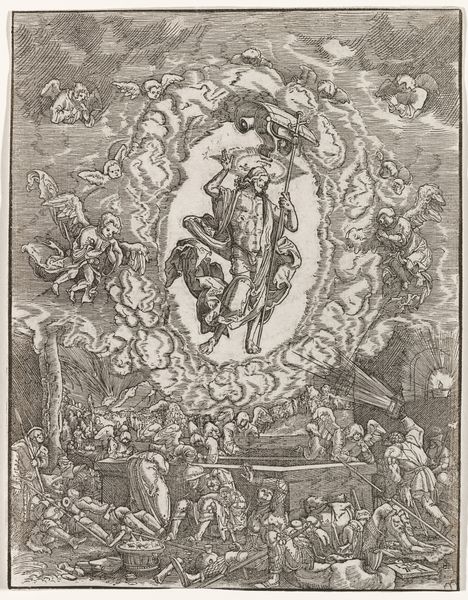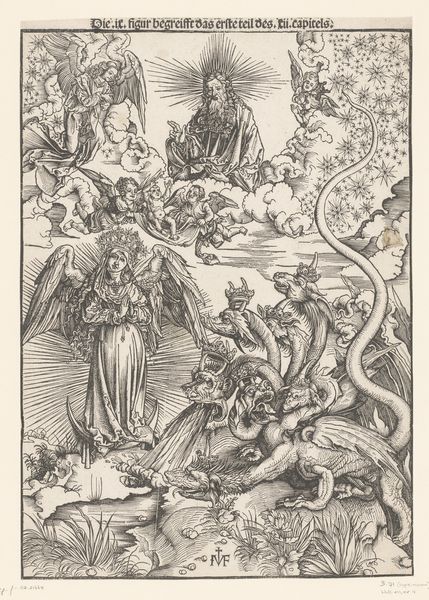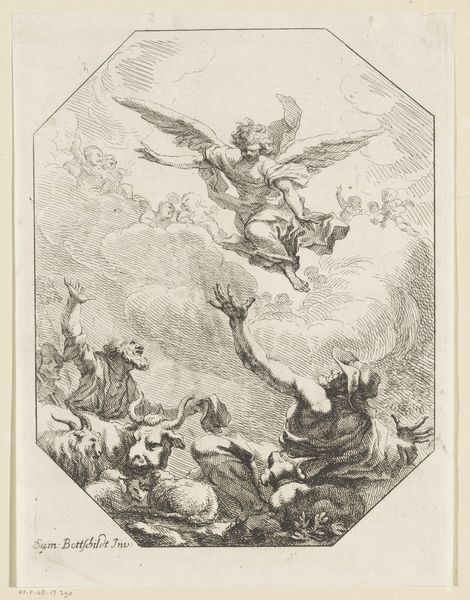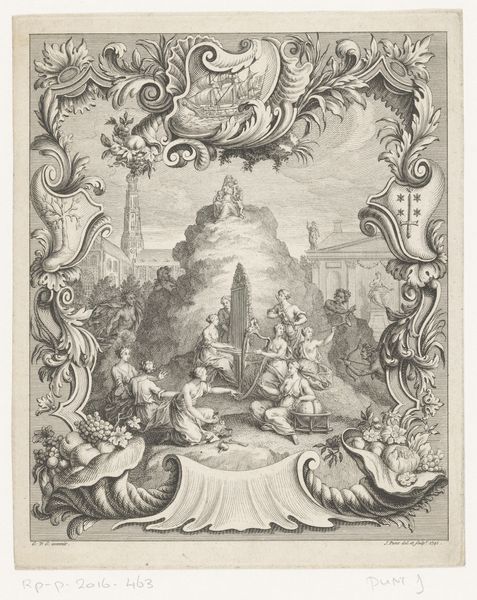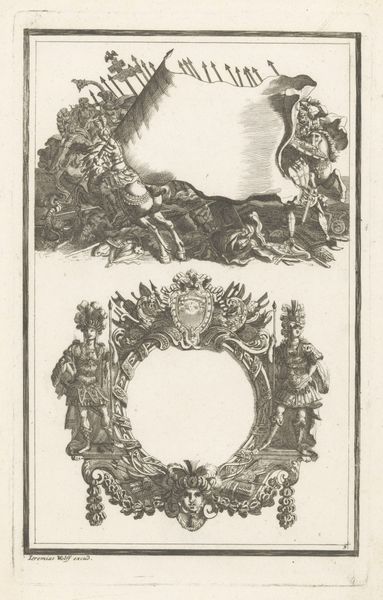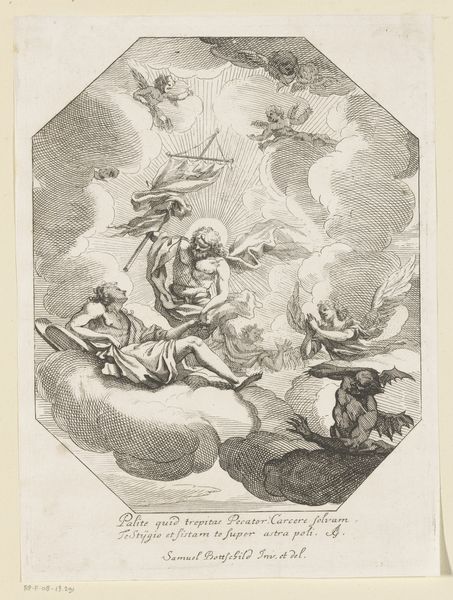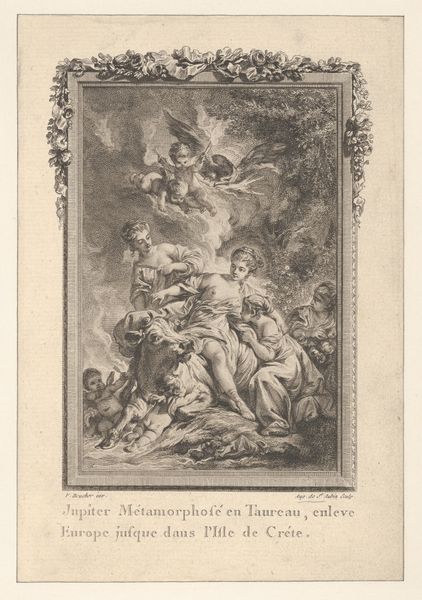
engraving
#
ink drawing
#
weapon
#
allegory
#
baroque
#
pen drawing
#
pen illustration
#
pen sketch
#
form
#
personal sketchbook
#
ink drawing experimentation
#
pen-ink sketch
#
line
#
pen work
#
sketchbook drawing
#
cityscape
#
history-painting
#
sketchbook art
#
engraving
Dimensions: height 245 mm, width 183 mm
Copyright: Rijks Museum: Open Domain
Curator: This is a pen and ink drawing entitled "Cartouche met wapens en gewonden," which translates to "Cartouche with weapons and wounded." It was created sometime between 1750 and 1762. Editor: It’s immediately striking. The contrast between the ornate frame and the chaotic imagery of warfare is jarring. I feel an intense juxtaposition of the frivolous and the grim. Curator: Absolutely. The Baroque period often employed such dramatic contrasts to underscore deeper meanings. Here, the cartouche itself, usually a decorative element to hold a dedication or inscription, is overwhelmed by allegorical symbols of military conflict and suffering. This engraving almost dares the viewer to consider the high cost of war. Editor: The weapons are particularly prominent, arranged almost casually with fallen bodies. What about their placement, do they carry symbolic weight? Curator: Undoubtedly. Weapons like cannons and spears typically represent power and aggression. Their inclusion within a cartouche meant for celebration becomes ironic. This creates tension between glorifying military victory and showing its gruesome consequences – wounded soldiers and even dead horses. This resonates powerfully, suggesting that triumph is always intertwined with tragedy. Editor: The swirling clouds and radiant light above the cartouche contrast heavily with the darkness below. Is this perhaps alluding to divine justification, or the supposed glory of war despite its realities? Curator: Precisely. It's an intentional interplay. The clouds and rays could signify a sense of higher purpose, perhaps the supposed divine right of rulers to wage war, but also a glimmer of hope. However, placing that supposed “divine light” over a scene of carnage forces viewers to interrogate whether such justifications are legitimate or just propaganda to maintain the war effort. Editor: I hadn’t considered it in such a directly political light! I was getting lost in the visual rhetoric, in that stark tension between order and chaos. Curator: It’s this layering of visual symbols and implied cultural critique that really activates the image. Understanding its historical setting is pivotal for understanding how it operates on multiple levels, prompting us to re-examine our perceptions and assumptions about conflict. Editor: Looking at the level of craft now and attention to detail in rendering devastation… I wonder what a modern version of a piece like this would communicate? Curator: Yes, it gives pause, doesn't it? There's a discomfort inherent in such close inspection of these narratives and how they continue to influence.
Comments
No comments
Be the first to comment and join the conversation on the ultimate creative platform.



